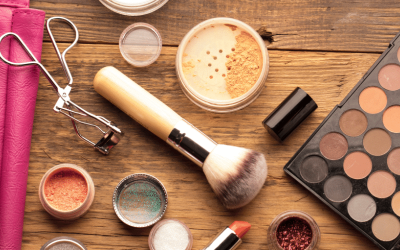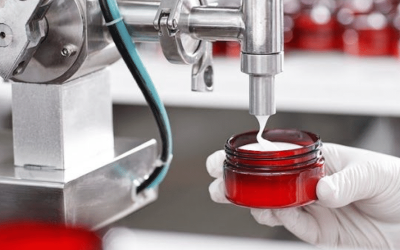1. Overview of the CDSCO
The Indian market for medical devices is controlled by the Central Drugs Standard Control Organization (CDSCO). The Ministry of Health and Family Welfare established rules for producing and importing cosmetics and medical equipment to protect the public. To ensure that medical devices sold in India adhere to international standards, encourage transparency, and guarantee their efficacy and security, CDSCO implemented the Cosmetic Drug Act 1940 and Rules 1945 specifically for cosmetics. To keep up with the most recent cosmetics products, the CDSCO amended the Act and Rules in 2020. According to CDSCO, all cosmetics offered for sale in the Indian market must be secure, efficient, and have a favorable risk-benefit ratio. The manufacturer and importer are given instructions on how to label and use the cosmetics, register the medical device, obtain a license, and store and transport it under the Cosmetic Drug Act and Rules 2020. So, anyone who intends to enter the cosmetics industry must know these laws and regulations.
2. What are cosmetics
As per the Drugs and Cosmetics Act of 1940, Cosmetics is “any article that can be rubbed, poured, sprinkled, sprayed, applied to or introduced to any area of the body to enhance its beauty, attractiveness, or appearance, or any area that consumers can use for cosmetic purposes.
3. What is Moisturizer
A moisturizer, also known as an emollient, is a cosmetic product used to lubricate, moisturize, and protect the skin. Sebum, which is normally produced by healthy skin, serves these purposes. The Latin verb million, which means to soften, is where the word “emollient” comes from. Water is a common ingredient in moisturizers, serving as both a temporary hydrating agent and a conduit for the absorption of some ingredients and the evaporation of the moisturizer. By filling in spaces between dead skin cells, they also aid in skin smoothness.
4. Types of moisturizers
There are three types of moisturizers
- Emollients – These are available as ointments, gels, and lotions. Emollients are oil-based moisturizers made to replace the skin’s lost lipids. They drink water. Defend and hydrate dry, rough skin. In addition to these qualities, they balance the skin’s microbiome to reduce any inflammatory tendencies.
- Humectants – One should research humectant moisturizers if one frequently uses skincare products that contain alcohol or soaps that dry out the skin. By removing it from the environment, this type of moisturizer seals the moisture (water) inside the epidermis. Humectants are made up of amino acids, glycerol, lactic acids, and hyaluronic acids.
- Occlusives – These moisturizers serve as the skin’s physical barrier, halting water loss. They are made of wax, silicone, or oil. These moisturizers have a very thick consistency and are highly recommended for people with dehydrated skin, such as those with eczema or other conditions that cause extreme dryness.
5. Category of moisturizer
Unlike medical devices, CDSCO does not classify cosmetics into different classes based on the risks involved. At the same time, cosmetics are categorized as per the category list given by the authority depending upon their intended use. Below listed are the categories which CDSCO provides for Moisturizer products:
- Face care products other than a face mask
- Face mask
- Eye contour products
- Lip care products
- Hand care products
- Foot care products
- Body care products
- External intimate care products
- Chemical exfoliation products
- Mechanical exfoliation products
- Skin-lightening products
- Other skincare products
6. Forms required
Application Form | Approval Form | Fees | Licensing authority | Validity | Penalty |
Form Cos -1: Application to import cosmetics. | Form Cos- 2: Permission to import cosmetics. | $1000 for each category+ $50 for each variant + $500 for each manufacturing site
| CDSCO
| Five years
| Under section 10 A, a person can get imprisonment for three years, a five thousand fine, or both.
|
Form Cos– 5: Application to manufacture cosmetics. | Form Cos– 8: Permission to manufacture cosmetics. | Rs. 10,000/- (Ten items of each category are free) | Five years
|
| A person can get imprisonment for one year, a one thousand fine, or both, which can be extended to 2 years imprisonment and a fine up to INR 2000. |
Form Cos– 6: Loan license application to manufacture cosmetics. | Form Cos– 9: Permission for loan license to manufacture cosmetics. | Rs. 2500 and Rs. 1000 inspection fees for each inspection. | Five years
|
| NA
|
7. Documents for the cosmetics business
To manufacture | To import |
Form Cos –5; | List of documents required for Import registration in COS-2: |
Adhar card number with valid mobile number (mandatory) | Document required from the overseas manufacturer: Legal documents (which need to be attested): · First Schedule · Frees Sale certificate. · GMP certificate of an actual manufacturing site – Technical Documents (on manufacturer’s letterhead with a sign and stamp): · Product Specification/COA · Ingredients List · Testing Method · Heavy Metal declaration · Non-animal testing declaration |
Fees challan; Cover letter | Documents from Authorised Agent: · Cover Letter · Second Schedule
The applicant must provide the translated version if any documents are in a foreign language. |
Ownership of the cosmetics brand. |
After getting the registration certificate, · If there are any changes in labeling or composition or testing, specification, or documentation of any of the cosmetics pertaining to this Registration Certificate, etc., then it needs to be informed to CLA within 30 days of such changes. · And if there is any Change in Name or address of the Authorized Agent or Legal manufacturer without constitutional change, then it needs to be informed to CLA within 60 days of such changes. |
Documents of the firm constitution, such as the article of association | An affidavit shall be present if there is no provision for a manufacturing license for cosmetics in a country. |
Declaration of partners and the list with the names of Directors, Partners, and Trustees with their complete addresses | For those cosmetics products imported for R & D purpose registration certificate is not required. |
Power of Attorney on behalf of the company to authorized agents to submit applications | Fresh/ New registration cases: · Any change in the constitution of a Licensee. · In case of acquisition or merger of the company with any other company. · Change in share capital or Board of Directors. · Proprietorship to a partnership, including Limited Liability Partnership or vice versa. · Conversion from a private to a public company or from a public to a private company |
Approved layout plan for manufacturing site with the section-wise layout of the site and machines. | No fresh/new registration cases: · Testing Method change. · Composition change · Updates in packs and labels · Minor manufacturing changes not affecting the final product. · Change in Name or address of Authorized agent or Legal manufacturer without constitutional change.
v A fresh registration certificate has been taken from the CLA within 180 days of such change. |
Possession of documents such as ownership. Registry, lease, rent papers. |
|
Master file of the site. |
|
List of the plant according to a section of machinery and safety equipment |
|
Technical staff’s full particulars. |
|
Declaration of manufacturing analytical chemist |
|
List of cosmetic products with their composition formula and manner of labelling. |
|
Manufacturing process details, flow chart of the process. |
|
Details of the water system with water testing report. |
|
Registration from the district industries center. |
|
Permission from state pollution control for manufacturing site |
|
NOC from the fire safety office |
|
Approval from the government for testing. |
|
8. Steps to register cosmetics in India
Step 1 : Determine if the products fall under cosmetic category from the list available in Drug and Cosmetic Act 1940 and Rules 1945
Step 2 : Fill the application based on the role – manufacturer or importer.
Step 3 : Submit the documents based on the role -manufacturer or importer
Step 4 : Licensing authority will scrutinize the documents
Step 5 : Licensing authority satisfied with the documents.
Step 6 : Grant of permission for manufacturing or import based on the application submitted.
Step 7 : Market the cosmetic product in India.
.
Conclusion: In 2023, the Skin Care market will generate US$8.07 billion in revenue. The market is anticipated to expand by 3.16% yearly (CAGR 2023-2028). In terms of global comparison, the United States will generate the most revenue (US$21,090.00m in 2023). In 2023, per-person revenues of $5.65 are produced based on population statistics. 89% of Skin Care market sales in 2023 will be attributable to non-luxury products. New players are entering the market to help quell the rising demand. People are no longer constrained by gender to care for their skin due to an increase in young people. To regulate the cosmetic market and give consumers a variety of options while preventing them from falling for deceptive advertising, the Indian government is collaborating with CDSCO. To enter the market, new producers and importers must first understand the market dynamics and follow the regulations for product registration.
Simplified CDSCO Licensing: Your Step-by-Step Guide - Download Now
Download our simplified step-by-step guide to understand the CDSCO licensing process. Streamline your licensing journey and ensure compliance with ease.







